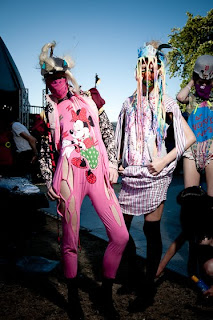Origins Architects is architectural bureau based in Rotterdam, Netherlands. They position themselves as oriented on sustainable approach in architecture, with careful attitude to environmental conditions and keeping local traditions in buildings.
For solving problem of energy-efficient building OA uses a standard for contemporary green architecture set of sustainable technologies in their projects, Origins Architects cannot be named innovative in this area and their main merit is successful combination of already developed technologies and pleasant design with strong links to traditional architecture; they just create simple buildings where habitants will live with pleasure.
Obviously, this bureau gives preferences to organic renewable materials. As a reference to traditional folk architecture, designers of Origins Architects make extensive use of wood and plywood both exteriors and interiors, that is understandable - wood is renewable and local material, at the same time it creates special atmosphere of lively breathing space, it keeps a spirit of a place.

The example of their work is 'eco -villa' in Nieuwveen, Netherlands. There was a task to design a house that will be independent of the engineering communications. For this aim, a house has been equipped PV solar panels (3 on diagram below) for electricity supply. Configuration of building and its glazing allow to achieve passive solar energy (1, 4) for lighting and heating through the whole year. The shape of roof gives opportunity to gather rain water in subterranean tank (2,6,7). Also they used geothermal energy (8) for heating and cooling in different seasons of the year. As it is illustrated with diagram from OA website, warm is collected and then spreaded by heat pump (9).

Are these applied techniques appropriate for South Holland conditions? This region has rather soft climate with average minimum temperature near +2° in winter season and maximum temperature +24° in summer period; average annual precipitation is near 650 mm. So, these conditions are favourable for collecting rain water for household necessities and combined usage passive solar energy and geothermal energy for heating effectively. Glazing surfaces of this house are oriented to the Sun's motion - they are placed on east, south, west facades of the building. It seems to me that there is a risk of overheating of the house in summer period. At the same time, cooling is organized with using geothermal energy; in principle, it should be sufficiently for creating comfortable conditions. It is not very clear about photovoltaic electricity supply and its effectiveness for this region. Netherlands has average annual level of solar irradiation near 1000 kWh/ m2, particular in region of South Holland this number is 825-1100 kWh/ m2. Ideally, it gives opportunity to get energy enough for needs of a small house, if solar panels have square more than 5 m2. At the same time, their placing only on the surface of the roof complicates collecting of solar energy in winter period - it would be more suitable to set up additional solar panels vertically.
http://www.oasd.nl/












































